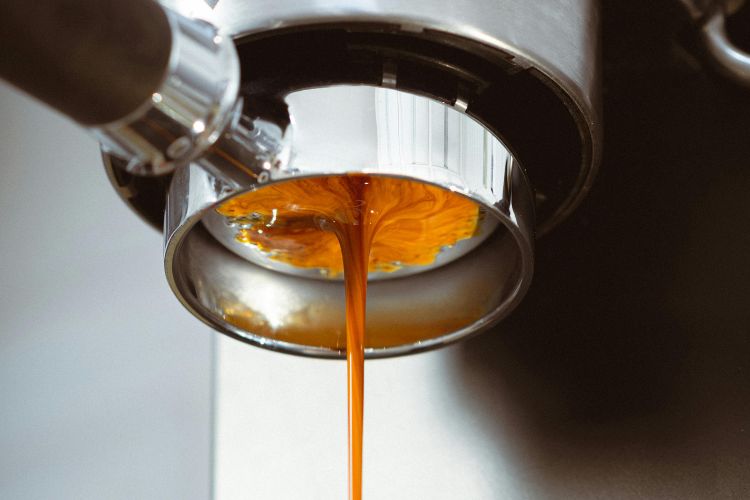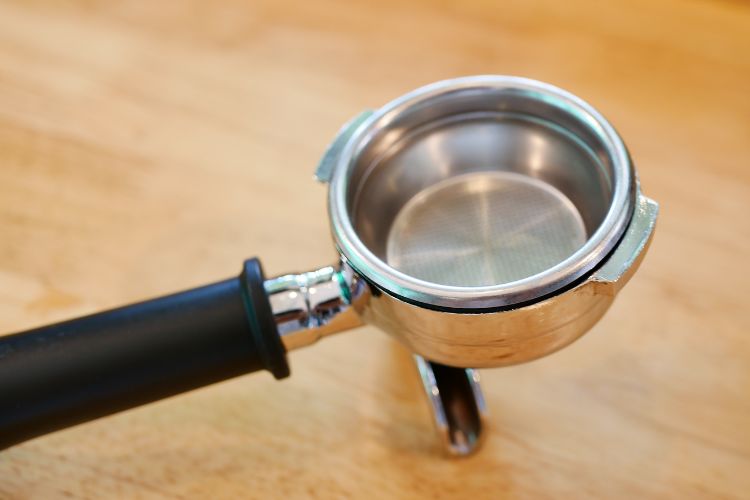Breville Bambino Plus vs. Gaggia Classic Pro: Comparison Guide
Shopping for your first serious espresso machine? You’ll probably run into two names again and again: the Breville Bambino Plus and the Gaggia Classic Pro.
The Breville Bambino Plus is about making great coffee super easy. It’s compact size fits just about anywhere, it heats up in a flash, and most of its features are automatic—you don’t have to be a barista to get a tasty shot or creamy milk.
The Gaggia Espresso Classic Pro, on the other hand, is for those who like to get hands-on. It’s got a timeless, sturdy, metal design and uses a commercial-style portafilter and steam wand. You’ll have more control over your espresso and milk frothing, perfect if you enjoy dialing things in or experimenting with new recipes.
In this Breville Bambino Plus vs. Gaggia Classic Pro comparison guide, you’ll learn what stands out with each machine so you can figure out which one fits your style better.
Breville Bambino Plus Overview
The Breville Bambino Plus is a compact, entry-to-mid-level home espresso machine designed for users who want café-style drinks without the footprint or learning curve of a traditional boiler-based system.
At just 7.7 inches wide and weighing around 11 pounds, it fits easily under low cabinets and tucks between appliances. Its thermo-coil heating system reaches brew temperature in roughly three seconds, removing the long warm-up typical of larger machines.
- The Breville Bambino Plus delivers third wave specialty coffee at home using the 4 keys formula and is part of the Bambino Series that offers the faster way to professional results at home in a compact footprint: serious espresso, serious value
The Breville Bambino Plus features a 54 mm stainless steel portafilter with a commercial-style basket that holds about 19 grams of coffee grounds.
It starts with a low-pressure pre-infusion to gently soak the coffee puck before increasing to full 15-bar pump pressure. This helps prevent uneven extraction and ensures a more consistent shot, even for beginners.
You can control the shot volume with a simple dial, choosing between programmed single or double shots or manual extraction.
Plus, the built-in PID temperature controller keeps the water temperature steady within ±1 °C, offering precision and stability usually found only in higher-end machines.
Gaggia Classic Pro Overview
The Gaggia Classic Pro looks, sounds, and behaves like a shrunk-down version of the machines you see in cafés.
When you turn it on, you’ll have to wait two to three minutes for the aluminum boiler to heat up. Then, purge a little water through the group to stabilize the temperature. After that, lock in the 58 mm chrome-plated brass portafilter and pull your shot by eye or using a scale.
- Solid Steel Housing, Made in Italy
- 9 Bar Espresso Extractions
- Stainless Steel 58mm Commercial Portafilter
- Commercial Three Way Solenoid Valve
- Commercial Steam Wand
Inside, the machine has a 1,350 to 1,370 W aluminum boiler with a 3.5 oz (100 ml) capacity—small enough to heat quickly but large enough to keep the temperature steady during a double shot.
A passive thermostat controls the brew temperature at about 200°F (93 °C), with a higher setting for steaming. Because of this, you’ll have to wait about 30 seconds when switching from brewing to steaming.
Steam pressure is modest, around 0.8 to 1.0 bar, so it takes about 45–50 seconds to steam a 6 oz pitcher to cappuccino temperature.
Breville’s Bambino Plus vs Gaggia’s Classic Pro: What’s the Difference?
Here are the key differences and features to consider when choosing between the Breville Bambino Plus and the Gaggia Classic Pro.
Brewing Performance
The Bambino Plus impresses with its thermo-jet heating system, reaching the ideal brewing temperature of 93°C in just about three seconds.
Thanks to its integrated PID controller, the Bambino Plus maintains temperature within a tight ±1 °C range, ensuring consistently balanced shots every time.

The overpressure valve (OPV) is factory-set to 9 bar, so you don’t have to worry about adjustments to get a well-extracted espresso. From my experience, this makes the Bambino a fantastic choice if you value speed and reliability.
In contrast, the Classic Pro uses a traditional 100 ml aluminum boiler controlled by a simple thermostat. It takes 2 to 3 minutes to warm up, and during extraction, the temperature naturally drops by 2 to 3°C.
Its OPV comes set higher—between 12 and 14 bar—meaning most owners perform a spring swap to bring it down to the optimal 9 bar for specialty coffee.
Once modified, the Classic Pro’s 58 mm brass group head and heavier portafilter offer a bit more body and a satisfying tactile feel compared to the Bambino’s smaller 54 mm system.
Milk Frother/Steaming Functionality
The Bambino Plus shines with its automatic steam wand, offering three foam levels and a built-in temperature sensor. Simply place your jug under the wand, press a button, and let the espresso machine do the work.
Texturing about 150 ml of milk to 65°C takes roughly 40 seconds, and the Bambino can steam continuously until the water reservoir runs low. This automation makes it easy to get consistent microfoam without much fuss—perfect if you’re in a hurry or new to milk texturing.
On the other hand, the Classic Pro relies on a traditional single-hole manual steam wand with about 0.8 bar of steam pressure.
Steaming 150 ml of milk to temperature takes around 45 to 50 seconds, but because of the smaller boiler, it needs 20 to 30 seconds to recover heat between consecutive pitchers. This means if you’re making multiple lattes back-to-back, you’ll need to pace yourself.
Build Quality and Repairability
The Gaggia Classic Pro feels substantial at 16 pounds, thanks to its sturdy folded steel chassis, solid brass, and chromed components.
One of its biggest strengths is how user-serviceable it is: gaskets, switches, and the 3-way solenoid valve can all be replaced easily using standard parts. For anyone who likes to keep their machine running long-term or perform DIY repairs, this is a major advantage.
In contrast, the Breville Bambino Plus weighs just 11 pounds. While its outer chassis is steel, many internal supports and the drip tray are plastic.
The thermo-jet coil and integrated steam valve aren’t serviceable by users, meaning any board-level issues generally require factory repair or replacement.
If you prefer a low-maintenance machine with minimal tinkering, the Bambino Plus fits well. But if repairability matters, the Classic Pro takes the lead.
User Interface and Daily Workflow
Operating the Bambino Plus is straightforward: three buttons for single, double, and manual shots, plus a dial to adjust milk temperature and foam levels. It’s mostly push-button and hands-off, which is great if you want convenience and consistency without fuss.
The Classic Pro, on the other hand, uses three rocker switches for power, brew, and steam. It requires manual timing of shots and toggling between brew and steam modes.
There’s no shot timer or volumetric control built in, so your results depend heavily on your own timing skills with a scale and stopwatch.
Temperature Stability and Recovery
Thanks to its integrated PID controller, the Bambino Plus maintains very stable brew temperatures even across multiple shots. It also transitions instantly from brewing to steaming mode, making the workflow smoother for busy mornings.
The Classic Pro uses a simple thermostat, so you’ll notice some temperature drift during extraction.
Most users “temperature surf” by flushing water until the boiler heating element cycles on, then waiting a set amount of time before pulling a shot.
Switching to steam mode raises boiler temperature to around 135 °C, and steam isn’t ready until after a 25 to 30 second heat-up period. It’s less convenient but offers a hands-on approach many traditionalists appreciate.
Portafilter and Basket Ecosystem
The Classic Pro features a 58 mm chrome-plated brass portafilter, compatible with a wide range of commercial baskets, tampers, and bottomless handles—giving you plenty of room to customize and upgrade.
The Bambino Plus uses a smaller 54 mm stainless steel portafilter. While there are aftermarket baskets and accessories available, the ecosystem isn’t as extensive as the Classic Pro’s.
Both espresso machines come with pressurized and non-pressurized baskets, so you can experiment with different setups.

Water Reservoir and Drip Tray
The Bambino Plus holds 1.9 liters of water and has a relatively shallow drip tray that typically fills after four to five double shots.
The Classic Pro offers a slightly larger 2.1-liter reservoir and a deeper drip tray, which can handle six to seven doubles before needing emptying. Both reservoirs are designed for easy removal from the back without moving the machine.
Price and Total Cost of Ownership
The Bambino Plus and the Gaggia Classic Pro both fall in a similar price range.
If you plan to mod your Classic Pro—adding a 9-bar OPV spring, a precision basket, and a metal tamper—you can expect to spend an additional $50 to $75.
The Bambino Plus is essentially ready to use out of the box with no immediate upgrades needed, but its repair options are limited once the warranty expires.
The Final Scoop
If you want an espresso machine that’s quick, easy to use, and delivers consistent results with minimal effort, the Breville Bambino Plus is a great choice. It’s perfect for busy mornings or anyone who prefers a mostly hands-off approach.
But if you enjoy getting hands-on with your espresso, don’t mind a bit of tinkering, and value a machine that’s built to last and easy to repair, the Gaggia Classic Pro will reward your effort. It offers more control and customization, making it ideal for those who want to dive deeper into the craft.




